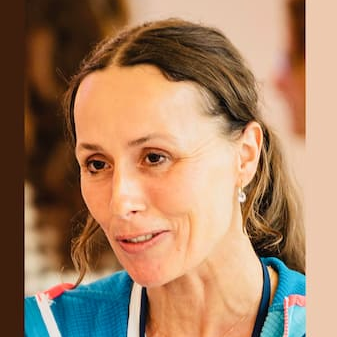Advances in Remote Sensing of Vegetation Traits Retrieval Based on Hyperspectral Data Analysis
A special issue of Remote Sensing (ISSN 2072-4292). This special issue belongs to the section "Remote Sensing in Agriculture and Vegetation".
Deadline for manuscript submissions: closed (20 January 2024) | Viewed by 11175
Special Issue Editors
Interests: optical remote sensing; imaging spectroscopy; vegetation properties retrieval; radiative transfer models
Interests: optical remote sensing; imaging spectroscopy; vegetation properties retrieval; radiative transfer models; agricultural monitoring and digital application
Special Issues, Collections and Topics in MDPI journals
Interests: imaging spectroscopy; vegetation properties retrieval; FLEX, vegetation fluorescence; optical remote sensing; radiative transfer models; retrieval methods
Special Issues, Collections and Topics in MDPI journals
2. Mantle Labs GmbH, Vienna, Austria
Interests: agriculture; hybrid retrieval; hyperspectral remote sensing; machine learning methods; active learning
Special Issues, Collections and Topics in MDPI journals
Interests: remote sensing; vegetation physiological properties; imaging spectroscopy; radiative transfer models; smart agriculture; biodiversity
Special Issues, Collections and Topics in MDPI journals
Special Issue Information
Dear Colleagues,
Biophysical and biochemical vegetation traits are important variables in the field of “agriculture and food security” as well as “forestry and biodiversity assessment”. The monitoring of traits such as leaf area index, leaf/canopy chlorophyll and water contents, plant nitrogen content and leaf mass per area is fundamental to assess actual crop nutritional status, grain quality and yield in precision agriculture or to identify forest structure and quantify functional diversity in forest ecosystems. Moreover, the detection and quantification of non-photosynthetic vegetation biomass (or coverage), in agricultural fields (i.e. senescent standing-dead vegetation or crop residue) or in natural ecosystems, represent an essential information for carbon cycle assessment, providing an important contribution to the monitoring and implemention of a conservative and sustainable agriculture.
Traditionally, the estimation of such traits from remotely sensed data has been performed through either parametric and non-parametric regression methods or through physically-based methods. Recently, the hybrid approach, which includes elements of both non-parametric and physically-based methods, was introduced as a promising solution for traits estimation.
In this context, hyperspectral sensors, featuring hundreds of spectral bands in the range of 400–2500 nm, can play an important role in the estimation of vegetation traits. In the next years, several spaceborne hyperspectral missions (e.g. ESA CHIME, NASA SBG) will be launched, following precursor missions such as PRISMA and EnMap, providing an unprecedented amount of hyperspectral data which will allow the assessment of specific vegetation traits at a higher accuracy with respect to multi-spectral systems. Moreover, the availability of miniaturized hyperspectral sensors opens a new era for UAV imaging spectroscopy, which can be exploited in forestry monitoring, high throughput phenotyping (HTP) and precision farming applications.
Despite the good results provided by the scientific literature, several issues still remain open. These issues include points related to which approach is better for spectral and/or sampling dimensionality reduction, which retrieval algorithm and feature selection approach (e.g. full spectrum, expert/physically-based band selection, automatic band selection, PCA) is more suited for each variable or how much a developed approach is transferable to other contexts, across different years, sites and crop/forest types. This special issue aims at addressing some of these challenges, related to the retrieval of vegetation traits from hyperspectral data.
Original research articles, review articles, short communications or technical notes are welcome. Research topics may include (but are not limited to) the following:
Methods
- new methodologies for the estimation of biophysical and biochemical vegetation traits from hyperspectral sensors
- assessment of the impact of spectral/sampling dimensionality reduction (e.g. full spectrum, expert /physically based band selection, automatic band selection, PCA) for specific traits
- performance comparison of different algorithms/methods/approaches for the estimation of vegetation traits
- evaluation of algorithms/methods/approaches transferability on independent data set in different conditions (i.e. across different years, sites and crop types), e.g. through analysis of uncertainties
Applications
- Prototype products from hyperspectral data for agriculture and forestry monitoring
- Exploitation of products from hyperspectral data in precision agriculture workflows
- UAV/aerial hyperspectral data for high throughput phenotyping application and evaluation of the scaling-up to satellite level of developed methods
- Analysis of hyperspectral imagery for forest biodiversity assessment
- NPV detection and quantification in natural and agricultural environment for land use monitoring and carbon cycle assessment
Dr. Gabriele Candiani
Dr. Mirco Boschetti
Dr. Jochem Verrelst
Dr. Katja Berger
Dr. Roshanak Darvishzadeh
Guest Editors
Manuscript Submission Information
Manuscripts should be submitted online at www.mdpi.com by registering and logging in to this website. Once you are registered, click here to go to the submission form. Manuscripts can be submitted until the deadline. All submissions that pass pre-check are peer-reviewed. Accepted papers will be published continuously in the journal (as soon as accepted) and will be listed together on the special issue website. Research articles, review articles as well as short communications are invited. For planned papers, a title and short abstract (about 100 words) can be sent to the Editorial Office for announcement on this website.
Submitted manuscripts should not have been published previously, nor be under consideration for publication elsewhere (except conference proceedings papers). All manuscripts are thoroughly refereed through a single-blind peer-review process. A guide for authors and other relevant information for submission of manuscripts is available on the Instructions for Authors page. Remote Sensing is an international peer-reviewed open access semimonthly journal published by MDPI.
Please visit the Instructions for Authors page before submitting a manuscript. The Article Processing Charge (APC) for publication in this open access journal is 2700 CHF (Swiss Francs). Submitted papers should be well formatted and use good English. Authors may use MDPI's English editing service prior to publication or during author revisions.
Keywords
- hyperspectral sensors (satellite, aerial and UAV)
- vegetation biophysical parameters
- agriculture and food security
- forestry and biodiversity
- radiative transfer modeling
- deep learning and/or machine learning
- hybrid approach
- precision farming
- non-photosynthetic vegetation and carbon cycle
- high throughput phenotyping









